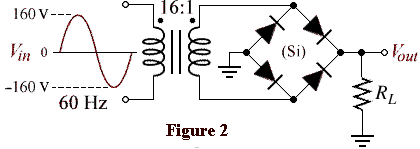Math Is Fun Forum
You are not logged in.
- Topics: Active | Unanswered
#1 Help Me ! » Boolean rule #11 » 2013-01-20 09:34:01
- reallylongnickname
- Replies: 2
This is Boolean rule#11. (It is not complete I know). My Q is, how did the
develop in the equation in line 4?rule #10 A = A + AB
rule # 7 A = AA
#2 Help Me ! » boolean rule » 2013-01-20 09:03:47
- reallylongnickname
- Replies: 1
![]()
#3 Help Me ! » distributive law » 2012-10-24 06:22:42
- reallylongnickname
- Replies: 1
The way to solve this is apparently to use division by the common factor which is 3x^2
However, if I solve it with out the division like this (see below), I get the same answer. So what rule should I be following? Am I skipping steps or am I using different method?
#4 Help Me ! » avg value » 2012-09-11 14:16:28
- reallylongnickname
- Replies: 0

The question asks, what is the average value of the output voltage fro the circuit.
The choices are; 5.48v 2.74v 0v and 6.37v
I choose 6.37v using a simple formula; 2(160)/pie then divid by 16. Also tried accounting for .7v through diode, however, the book says the answer is 5.48v. Could the book have made an error with their answer?
#5 Re: Help Me ! » correct? » 2012-07-21 11:11:41
Yes, this is what I mean... I kept coming up with a different answer than the text book. 19.6 * 10^-6
#6 Help Me ! » correct? » 2012-07-21 07:44:06
- reallylongnickname
- Replies: 4
Here is a question example out of text. Is the area correct? (I wasn't able to fill in the formula because of latex errors).
"What is the inductance of a 2 cm long, 150 turn coil wrapped on an low carbon steel core that is 0.5 cm diameter? The permeability of low carbon steel is 2.5 x10-4 H/m (Wb/At-m)."
#7 Help Me ! » RC circuit » 2012-07-05 13:12:31
- reallylongnickname
- Replies: 1

#8 Re: Help Me ! » Top bottom Bottom top » 2012-06-27 14:34:08
#9 Re: Help Me ! » ωτ∫ » 2012-06-24 16:46:10
Ok thats true. I think the idea is that once switched to #2, Vs is shut off. What time is taken to discharge the capacitor? I guessing just the t=RV formula could be used.
#10 Re: Help Me ! » ωτ∫ » 2012-06-24 16:14:24
Based on electron flow (neg to pos) current is flowing.
#11 Help Me ! » ωτ∫ » 2012-06-24 16:02:50
- reallylongnickname
- Replies: 4

Lets say the swich is moved to #2 position instead of #1.
I cannot figure out what is happening with the current in this RC circuit. Im guessing current would start from VS to R3 then to R2.
#12 Re: Help Me ! » Top bottom Bottom top » 2012-06-23 08:43:14
Came up with the idea to substitute "t" with "equivalent". This will also avoid any confusion with the resistance total of the circuit when working with series-parallel circuit.
#13 Help Me ! » Top bottom Bottom top » 2012-06-23 06:10:15
- reallylongnickname
- Replies: 3
Is there a trick to keep from confusing the
in the numerator and the denominator for each formula?Voltage divider formula in series.
Current divider formula in parallel.
#14 Re: Help Me ! » exponents and yx » 2012-06-18 16:17:38
I can put calc into rad mode, but still not sure how to compute the formula. What is to be inputted for "rad" in the formula?
#15 Re: Help Me ! » exponents and yx » 2012-06-17 13:31:06
Thx, it is more clear now.
Here is a separate Q.
I want to type in this angular formula on calculator. How do I go about inputing "rad?"
#16 Re: Help Me ! » exponents and yx » 2012-06-16 14:05:49
I keep making conversion errors. I can understand why it doesn't work on calculator if u go; 1 divide 10 times 10 yx -3
Why do you have to go; 1 divide 10 exp-3 to get the the answer in proper units.
#17 Re: Help Me ! » exponents and yx » 2012-06-16 12:22:11
The -3 is exponent.
If I go; 10 * 10^1 = 100
If I go; 10 exp 1 =100
#18 Help Me ! » exponents and yx » 2012-06-16 11:28:16
- reallylongnickname
- Replies: 8
I thought yx and exp were the same thing.
10 yx 1 = 10 on calculator but 10 exp 1 = 100
#19 Re: Help Me ! » simplify expression » 2012-06-06 15:22:53
Never mind, I solved it. It is now correct
#20 Help Me ! » simplify expression » 2012-06-06 15:18:07
- reallylongnickname
- Replies: 1
what am I doing wrong?
#21 Re: Help Me ! » V/r = I » 2012-05-26 06:13:06
ok thx I get it
#24 Re: Help Me ! » V/r = I » 2012-05-26 05:30:51
If I use the full method, I get the correct answer but this seems long process.
#25 Re: Help Me ! » V/r = I » 2012-05-26 04:56:02
Sorry, I added this to the original post before your reply:
My method is this: Divide the numbers first, then move the decimal three steps to the right in order to convert to milli amps. What rule am I not following in mathematics?
Yes 1000 ohms resistor or 1K.